Day 2 of a 3-day Autumn Tour and Wader Spectacular. It was a nice bright and warm start, with some nice sunny spells, before clouding over early afternoon. There was some drizzle and light rain on and off for an hour or so, and then it dried out again. We spent the day in central North Norfolk.
We popped in to Wells North Point first thing. There had been Pectoral Sandpiper and Little Stint here yesterday, the former had been around on and off for several days but had been very erratic, and we arrived to find one of the locals was looking, but had seen no sign of either this morning. There are lots of the margins of the pools you can’t see though, so we persisted anyway.
Scanning from the car park, there were eight Spoonbills out on the east pool, mostly asleep as usual, and lots of ducks, mainly Teal, plus a small group of Wigeon and a few Pintail. Several Common Snipe flew up from the grass and flew round calling. As we walked down the track, two Egyptian Geese flew in and landed on the middle pool for a bathe. Six Pink-footed Geese flew over too, our first of the trip, disappearing off into the fields beyond. We stopped at the end and looked back, but could only find a single Common Snipe on the mud on the edge of the eastern pool.
Several hundred geese erupted from the fields beyond now and streamed overhead, calling loudly – their farmyard honking gave them away as Greylag Geese and we could see their bright orange carrot-shaped bills as they came overhead. It was good to hear them now – we would refer back later, and contrast the noise this morning with the yelping calls of Pink-footed Geese. Some of the Greylags landed on the middle pool and some on the eastern pool. Six Pink-footed Geese flew in too, and landed on the eastern pool with the Greylags. We got them in the scope, the Pink-footed Geese noticeably smaller, darker-headed, with a smaller and more delicate mostly dark bill.
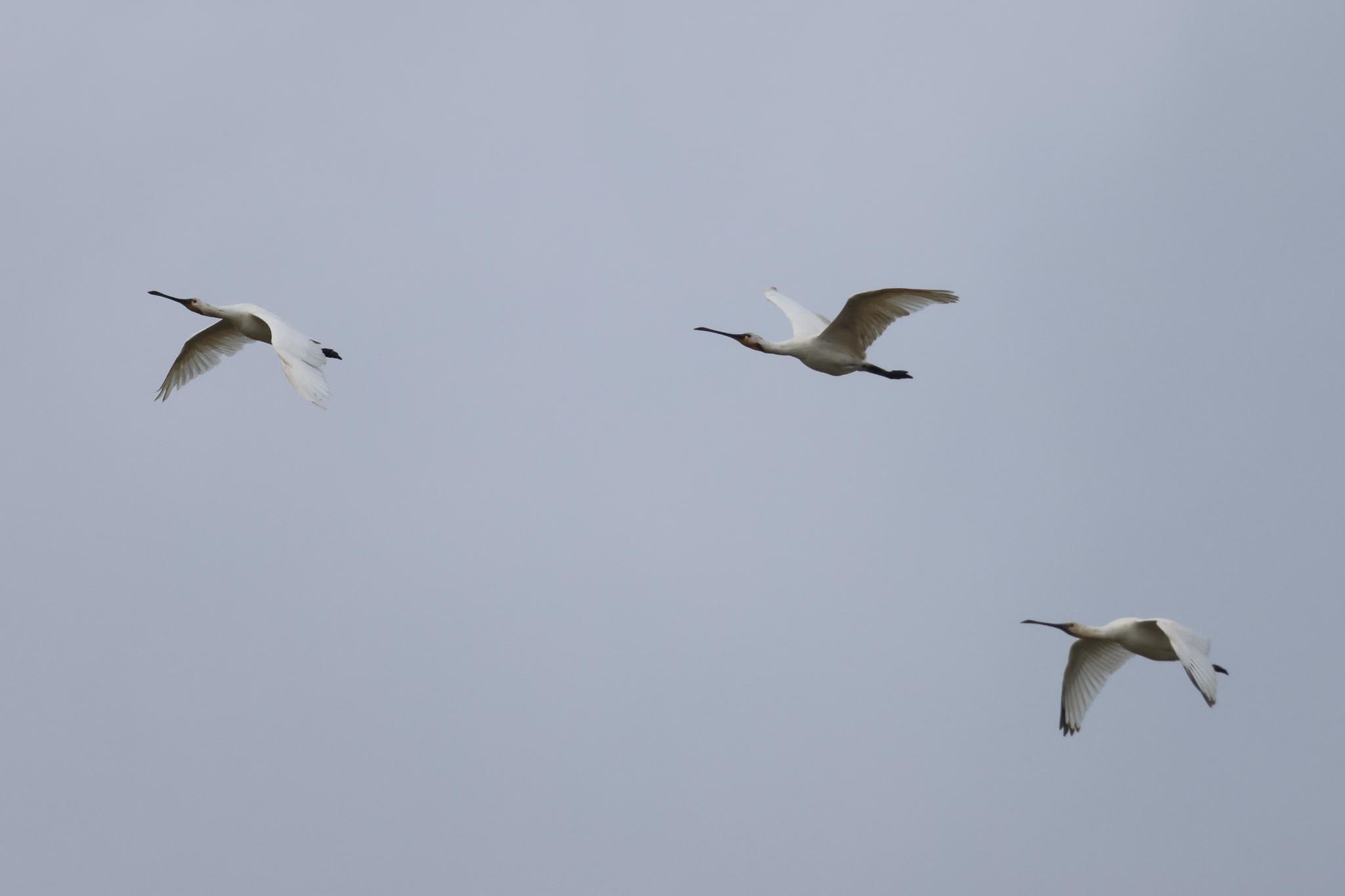
As we turned to walk back, three more Spoonbills flew in over the path, and dropped down with the original eight out on the eastern pool. Almost immediately, they all went to sleep too! As we got back to the minibus, there was a Marsh Harrier over the stubble field nearby. As we watched, it was joined by a second Marsh Harrier, and then a Common Buzzard over the hedge just beyond.
We moved on to Holkham. As we got out of the minibus on Lady Anne’s Drive, we could see some small flocks of Pink-footed Geese in the distance, whiffling down onto the grazing marsh. We walked west along the path on the inland side of the pines and we could hear their more musical, yelping calls through the trees – very different from the raucous Greylags we had heard earlier.
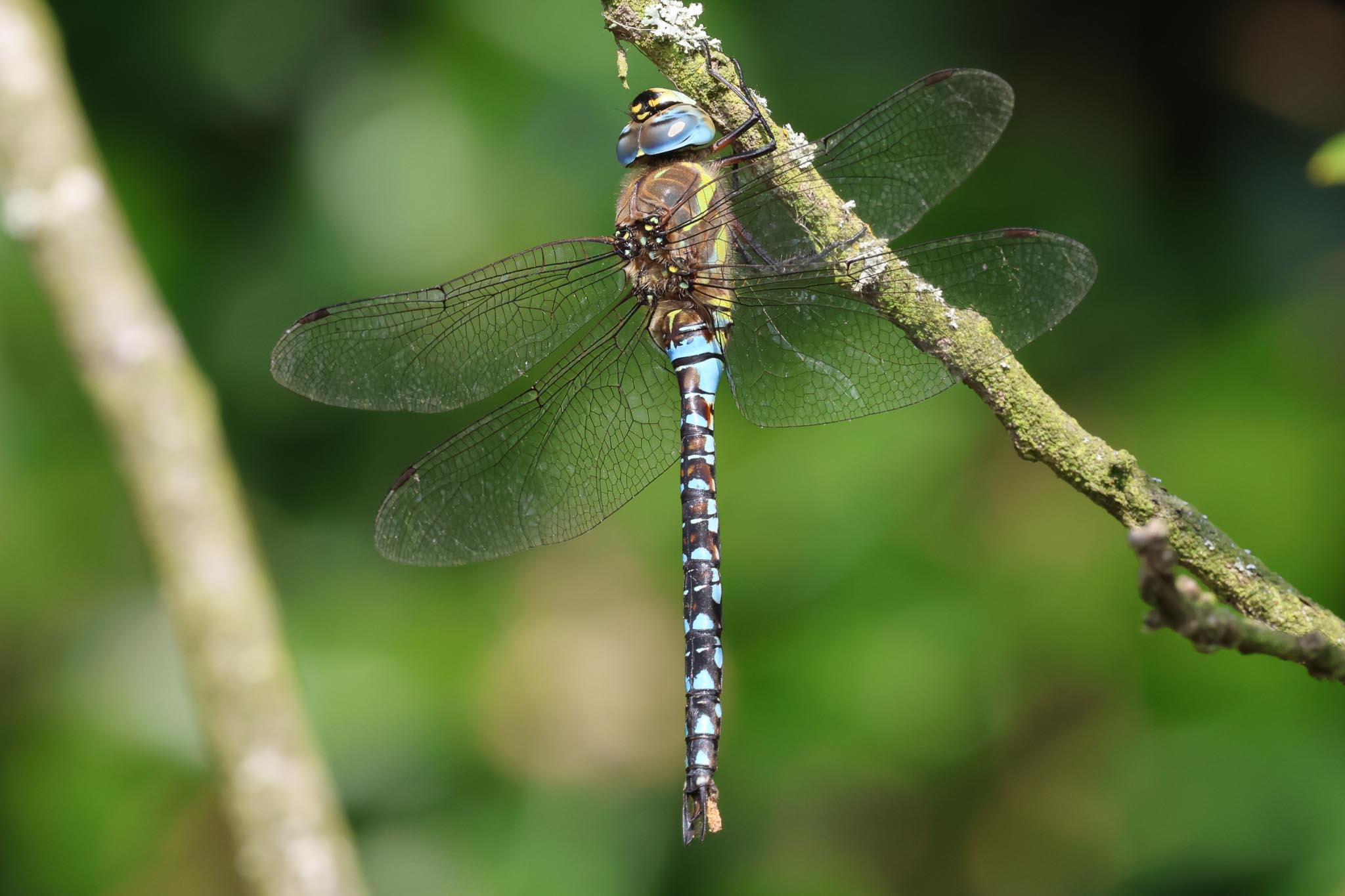
The sun was out now and there were lots of dragonflies out in the sunshine – Common Darters, Migrant Hawkers and a couple of Willow Emerald damselflies. Several Speckled Wood butterflies fluttered up over the track, chasing each other round in the dappled sunlight. A few Red Admirals and a couple of Commas were flying around and feeding on the brambles.
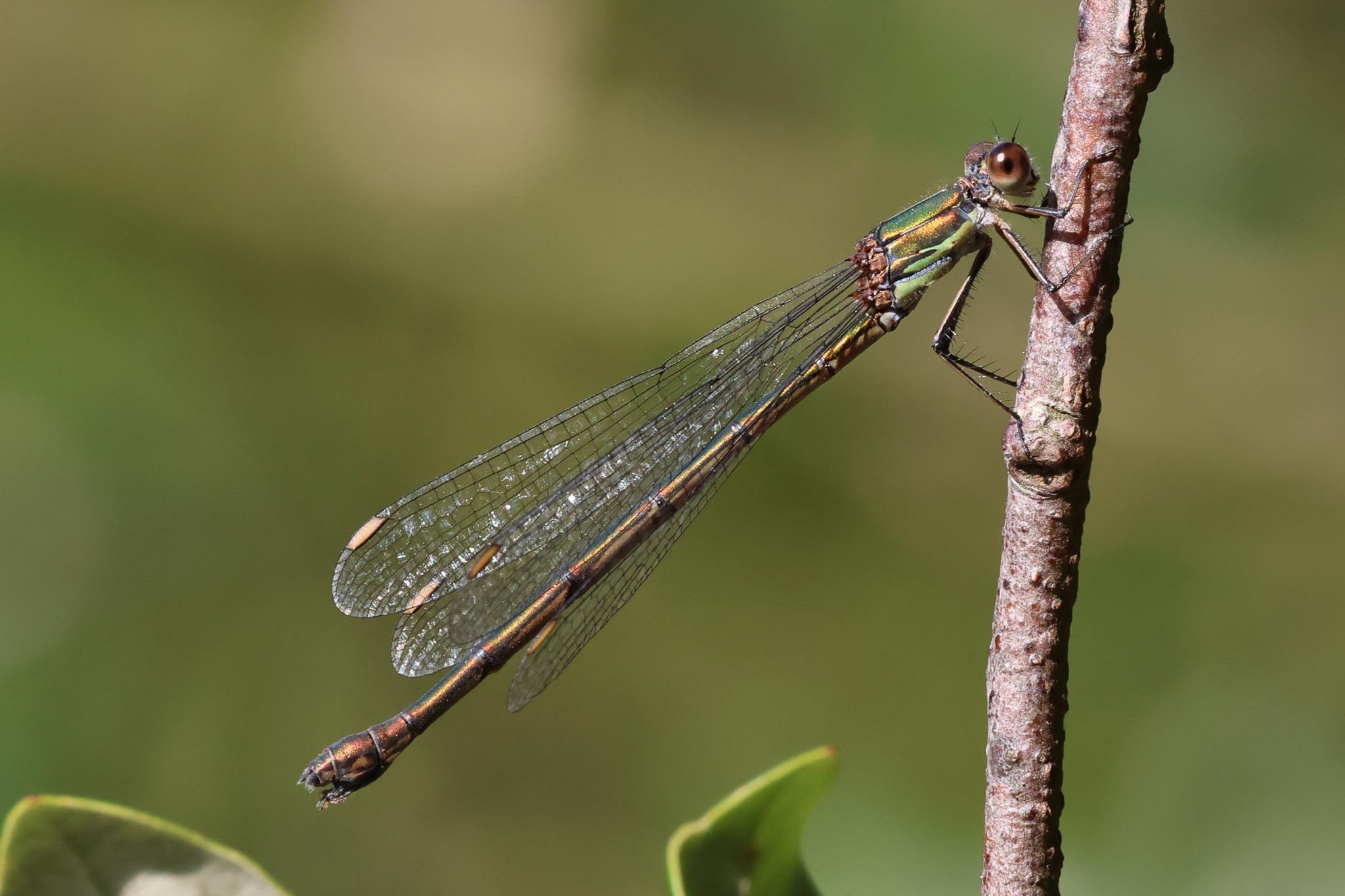
We stopped to scan over Salts Hole. There were a couple of Little Grebes in between the Mallards out in the middle of the water and one or two more laughing at us from the reeds. Several Jays flew in and out of the trees at the back and a small group of Stonechats flicked up and down from the fence and bushes.
Continuing west, we saw some tits flitting around in the trees ahead of us. With winds from the east, we were hoping for some drift migrants or perhaps a Yellow-browed Warbler here today, and the best place to look here for the latter is in with the tit flocks. We thought we heard a Yellow-browed Warbler calling in the trees now, but just at that moment we had found ourselves surrounded by noisy people and noisy dogs, coming at us from both directions. We stopped to listen but by the time the melee had dispersed it had gone quiet.
We walked on and up the boardwalk to Washington Hide. Scanning the grazing marshes, there was a large and white Great White Egret out on the grass behind the pool. Three much smaller Cattle Egrets flew up briefly but dropped back down in with the cows out of view behind a line of reeds. We could see another Great White Egret in with them, through a gap, but frustratingly not the Cattle Egrets now. There were several Common Buzzards perched in the top of the bushes, scattered across the marshes, including one very pale one. A striking bird, it is often reported as an Osprey or a Rough-legged Buzzard by unsuspecting visitors.
We could see several hundred Pink-footed Geese out on the marshes from the hide, and several more groups flew in, whiffling down to join them. Then we looked east to see skeins of several thousand geese heading towards us from over behind Wells. A very impressive sight, and one which we will enjoy here throughout the winter to come, we watched as they flew in in waves and dropped down onto the pools and grazing marsh. Another ‘wow’ moment!
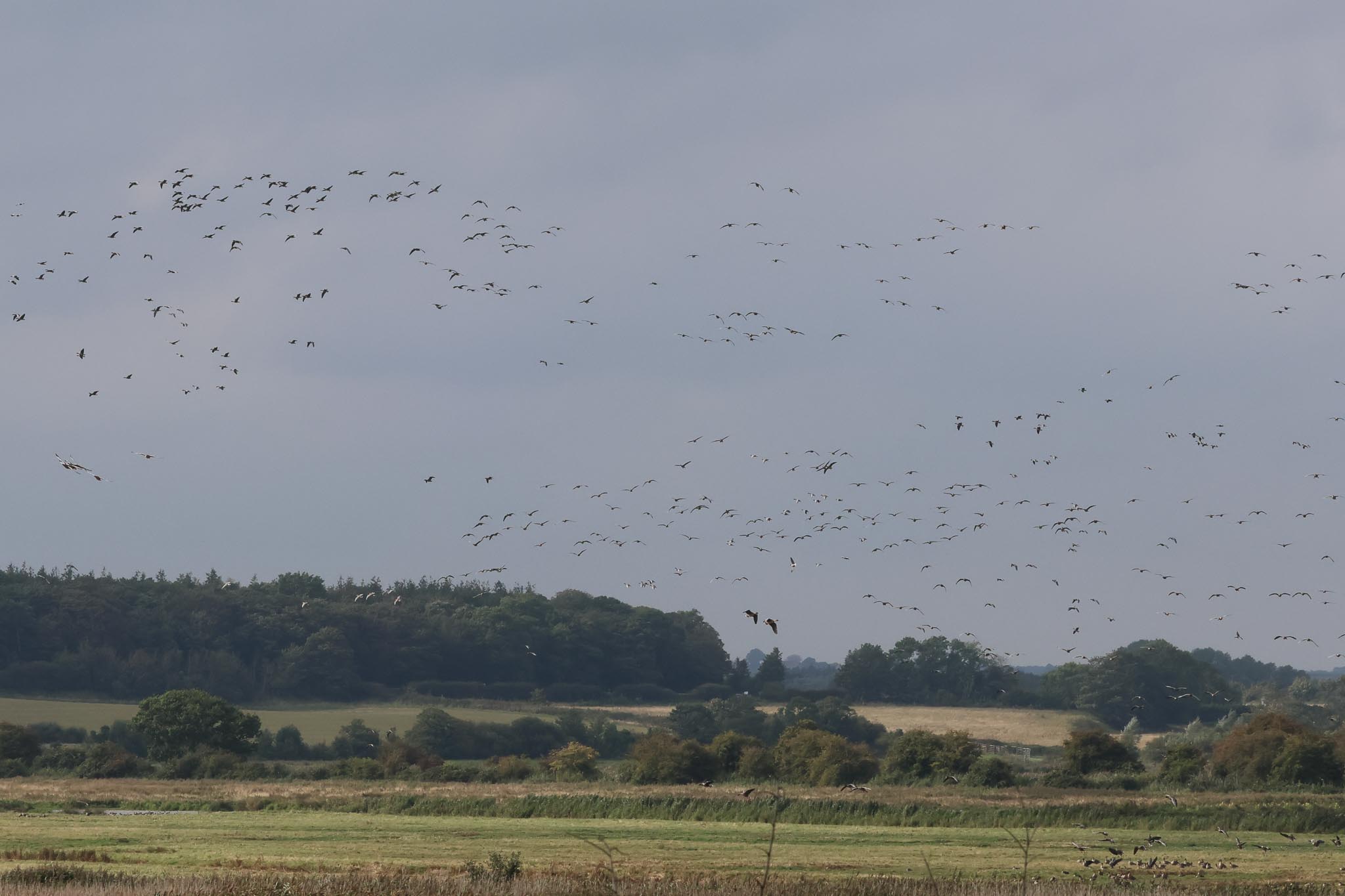
Continuing our quest for migrants, we left the hide and walked on west along the path, but it was a bit quiet in the trees. Past Meals House, we noticed an enomrous dark shape come out of the pines just behind a large oak tree in front of us. White-tailed Eagle! It emerged from round the other side of the oak tree, and we watched it drift out over the grazing marshes, flushing all the geese which flew up calling noisily.
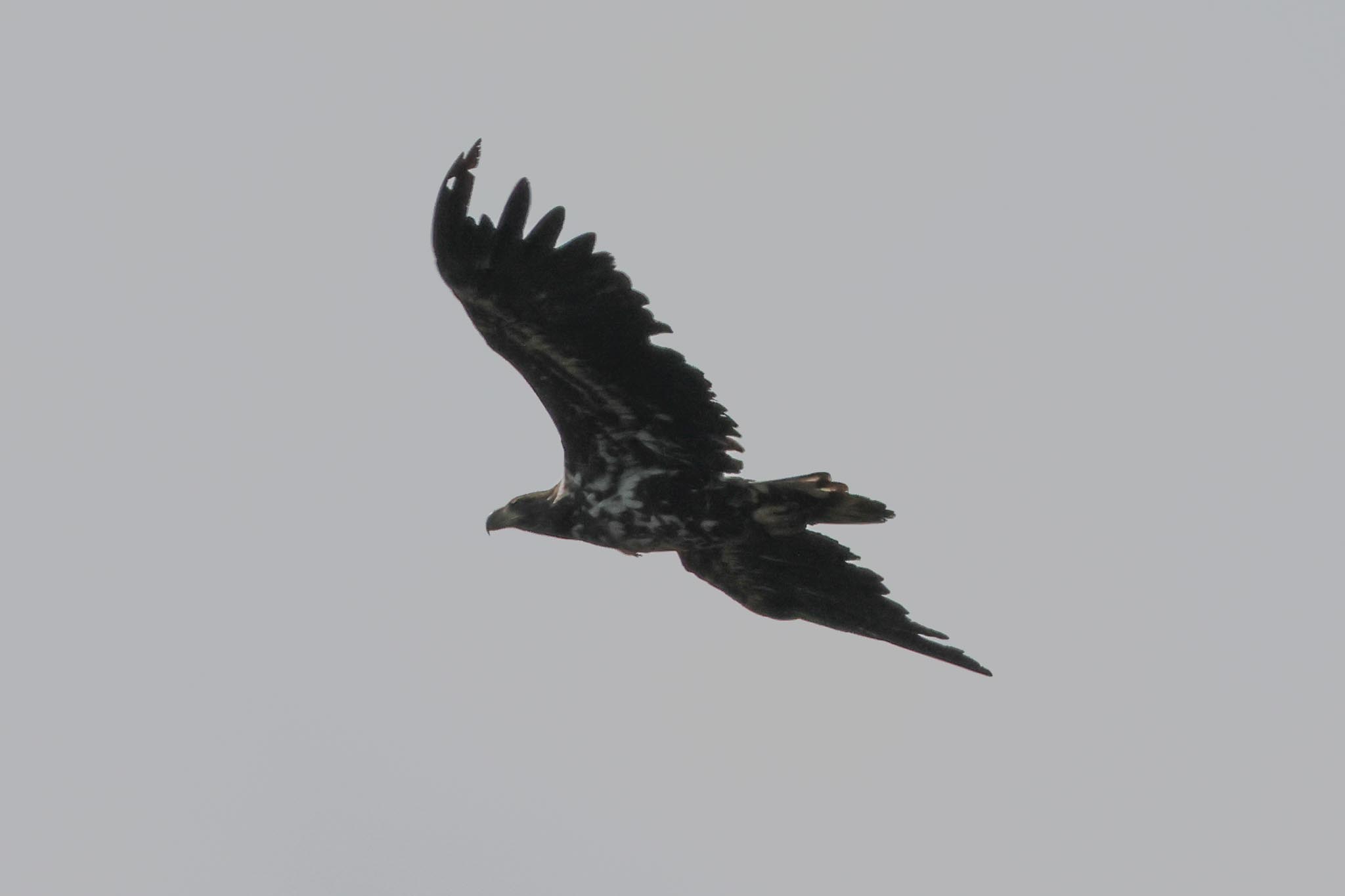
This White-tailed Eagle is a 3rd calendar year female from the Isle of Wight reintroduction project. She had made several visits to Holkham over the last two years and has been here on and off a couple of times over the summer. A very impressive sight!
We continued on to the west end of the Pines where we met another birder on the path watching a tit flock in the trees. He had just seen a Pied Flycatcher with the flock, but all the birds were starting to move into the pines. We scanned through the birds still close to the path and had nice views of a couple of Treecreepers and Goldcrests, but no sign of anything else. We thought they might come out again right on the end of the pines, so we walked round but they just seemed to be disappearing in deeper.
We carried on out into the start of the dunes, but the bushes here were very quiet, exposed to the brisk wind, and there was no obvious suggestion of any migrants having come in overnight. We didn’t have much time now to explore further into the dunes, so decided to walk slowly back.
There was a report of a Yellow-browed Warbler back at the crosstracks now, and another Pied Flycatcher, so it did seem like a handful of migrants had arrived. As we walked back towards the crosstracks, we saw some movement in the pines, so we cut in to see what was there. There were a couple of Chiffchaffs and some tits, and then we noticed some movement in the oak tree above us and looked up to see a Pied Flycatcher flitting around. It was tricky to see in the leaves, and as we tried to all get a good view, we realised there were actually two Pied Flycatchers in the same tree. From back out on the path, we saw them chasing each other through the trees a couple of times.
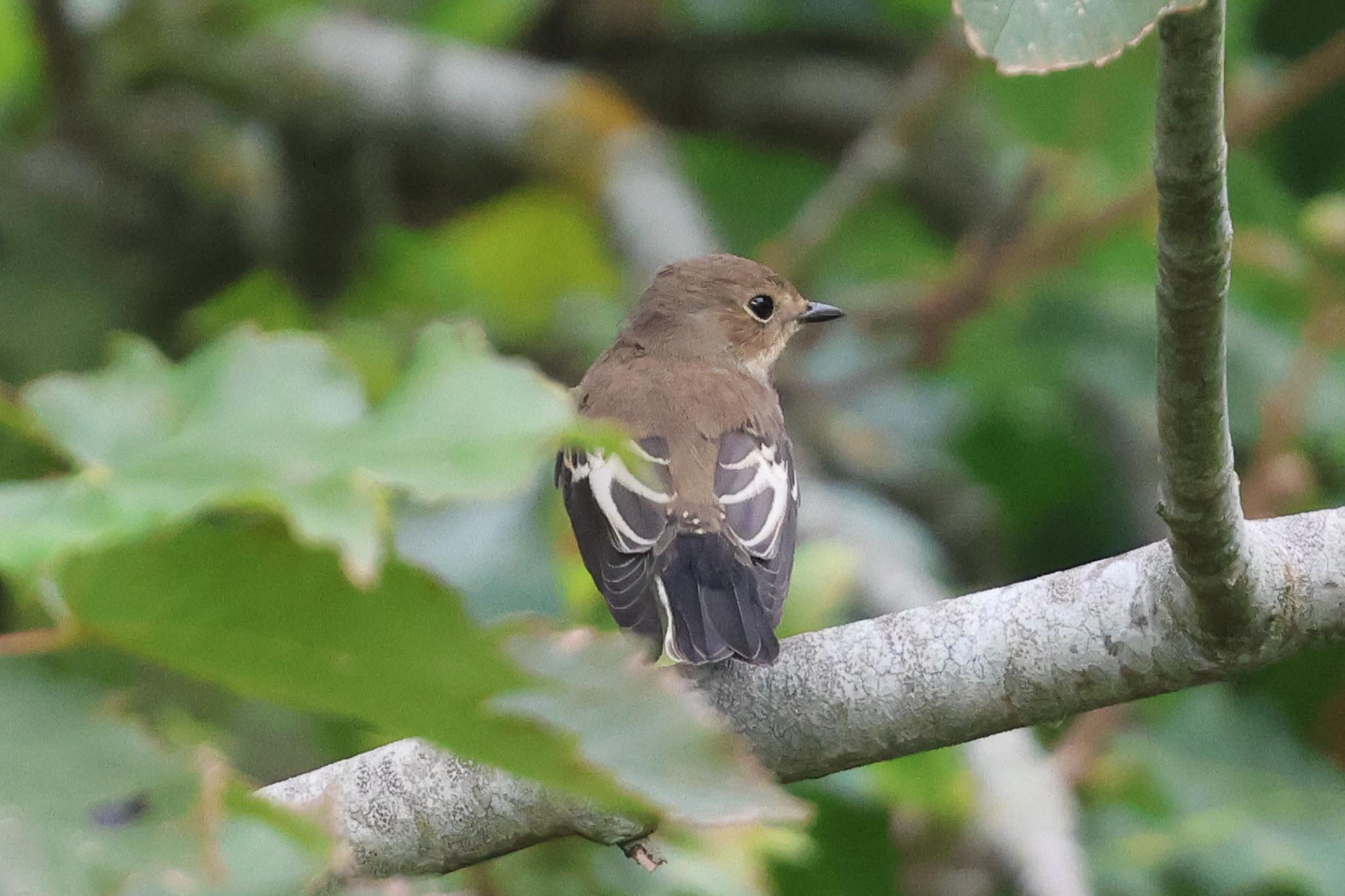
After getting distracted by the Pied Flycatchers, we continued on back to Lady Anne’s Drive for a slightly later than planned lunch. The wind had picked up, but we were still OK to sit out on the picnic tables by The Lookout cafe. While we were eating though, the sky turned greyer and darker and thankfully we had just finished when it started to rain. We ducked into the cafe, and the shower quickly passed over on the wind.
On the way back to the minibus, we looked across the grazing marshes to the west of Lady Anne’s Drive and could see three white shapes on a gate in the distance. They were the Cattle Egrets we had seen earlier dropping down with the cows, so we got a scope out and trained it on them. We could see their short yellow bills.
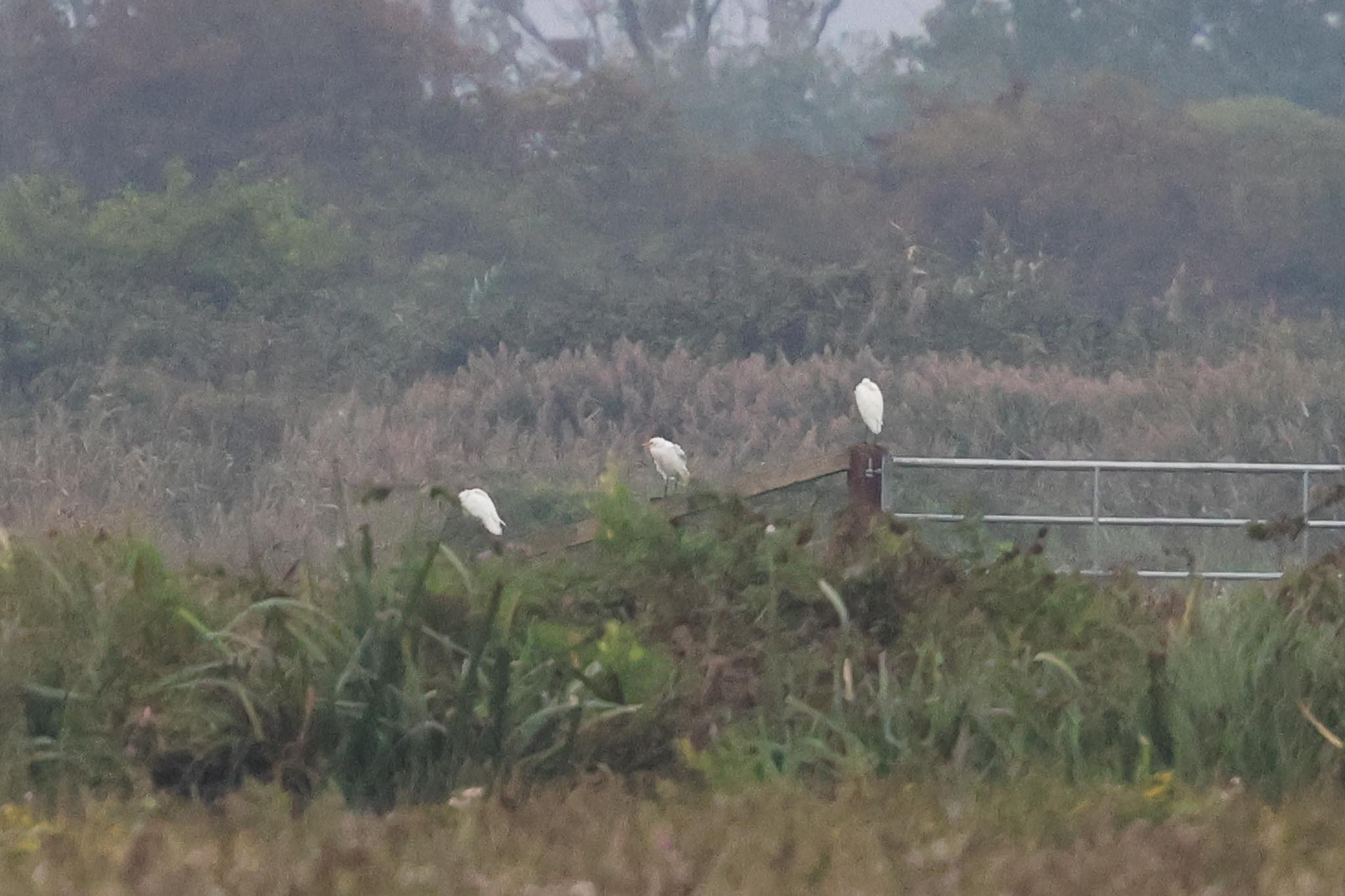
We drove round to Wells beach next and walked up past the lifeboat station for a quick look in the harbour. There was a nice selection of waders on the sands opposite, lots of Oystercatchers, Grey Plover and Ringed Plover. We got a single Knot in the scope, and then turned it on a nicely marked juvenile Bar-tailed Godwit which was feeding along the near edge of the channel in front of us. We could see it looked fairly grey and misty out over East Hills, so it was not a surprise when it started to rain again. We were exposed to the wind here, and getting wet, so we headed back to the car park. By the time we got back to the minibus it had stopped again, though the clouds were still low and grey and threatening.
With rain now on top of an easterly wind, we thought there had to be a chance of some fresh migrants dropping in to the trees. Walking down to the Woods, we stopped briefly to look at the boating lake. A single Tufted Duck was new for the trip list, and there were several more Little Grebes on the water too. It was quiet at first as we cut into the birches, and it was not before we got to the corner of the Dell, before we suddenly found lots of birds in the trees. Suddenly there were birds everywhere and we didn’t know which way to look, Long-tailed Tits and Chiffchaffs.
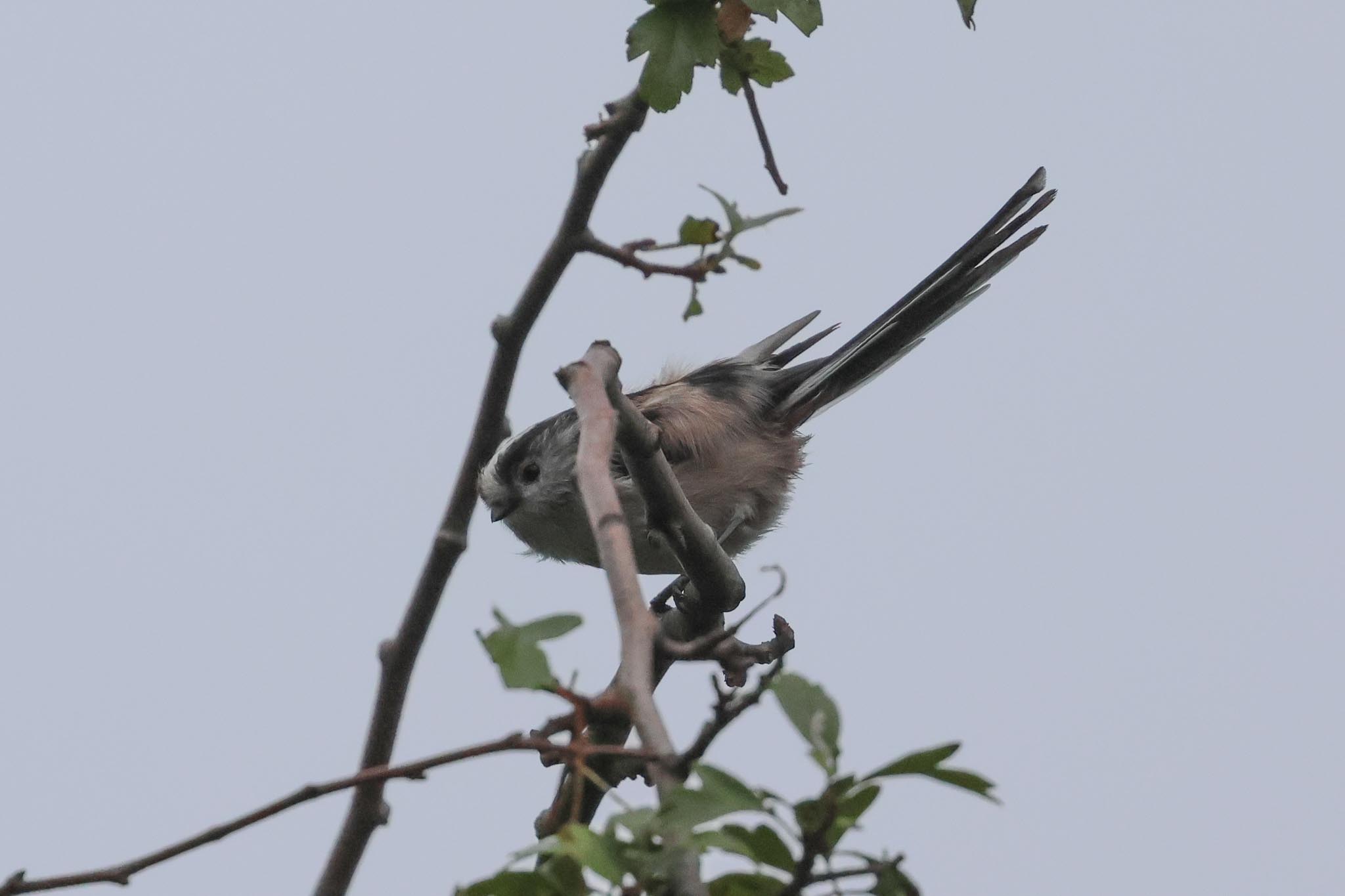
We started to follow the flock, and a bird flew up from the path ahead of us with a flash of red. It landed at the base of a nearby tree – a Common Redstart, just the sort of fresh-in migrant we were hoping for. Then it flicked back away from us and we lost sight of it. The tit flock moved quickly away through the trees and off towards the main path, so we thought we might be able to cut back round and catch them again that side. We got there just as they started to fly across the path – in quick succession, we found a Garden Warbler and then a Lesser Whitethroat with them, but nothing was hanging around to allow us to all get a good look. A Bullfinch flew across too, and disappeared into the hawthorns piping.
The flock disappeared into the birches by the boating lake, then emerged again the far end and cut back across the path towards the birches. We tried to follow again, but they were moving very quickly and we were too slow – by the time we got round to the birches we had lost them.
We carried on round to the Dell and had a look in the trees around the north side, but it was very quiet – all the birds were in the tit flocks. Out into the open area beyond the Dell, we found a few Blue Tits feeding in the hawthorns and then a Lesser Whitethroat appeared briefly. As we walked round to try to refind it, we realised there was another tit flock here, more Long-tailed Tits and Chiffchaffs. Again frustratingly they moved through the trees very quickly and after managing to keep track of them for a while, we lost them when they flew through the birches and out into the trees in the reeds beyond.
It was time to start heading back, but on the way we cut in again round the eastern edge of the Dell for one last look. We were almost back to the start of the birches when we found the first tit flock again in the trees. They were feeding now so not quite so mobile, but we could only see part of the flock and couldn’t find anything new in with them, before they moved on again. Unfortunately we were out of time. With the rain and east wind, it felt like there should be more birds in here. Maybe tomorrow.
















